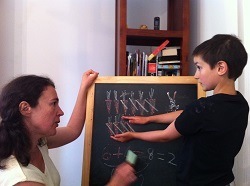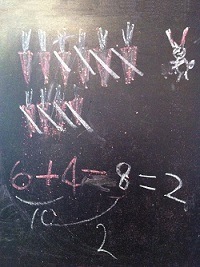Does your intelligent and creative child struggle with maths?
 Check for misconceptions!
Check for misconceptions!
Children often miscalculate when bored or under pressure. I would not call such mistakes serious. Serious mistakes take place when children do not understand the meaning of mathematical operations and get confused when a standard problem is slightly modified. Such mistakes are signs of misconceptions. They require diagnostics and corrections as soon as possible.
Research carried out in British schools showed that children constantly ‘invent’ rules to explain mathematical processes. This does not happen because children are ‘silly’, but because concepts underlying mathematical rules are not always properly explained. This lack of understanding leaves plenty of room for imagination. One maths educator told a story about a boy who instead of the rule “work from right-to-left” in vertical calculations adopted the rule “begin to calculate on the side by the piano” (the piano was probably mentioned by a teacher to show where the right side was). The piano was moved and the child became confused.
 I regularly see children with misconceptions in my own practice. Last year I was asked to teach a child who was making no progress in maths despite extra tutoring. The problem as it happened was a misunderstanding of the concept of number. The child made very quick progress on a visual method we used, continued to perform well, and passed an assessment for a selective secondary school.
I regularly see children with misconceptions in my own practice. Last year I was asked to teach a child who was making no progress in maths despite extra tutoring. The problem as it happened was a misunderstanding of the concept of number. The child made very quick progress on a visual method we used, continued to perform well, and passed an assessment for a selective secondary school.
If you decide to tutor your child, choose a tutor with a solid background in mathematics. What you do not want is for your child to be taught by rote. Learning mathematics like this results in ‘over-coaching’. The child might ‘improve’ in school tests but misconceptions would remain hidden and resurface at secondary school.






